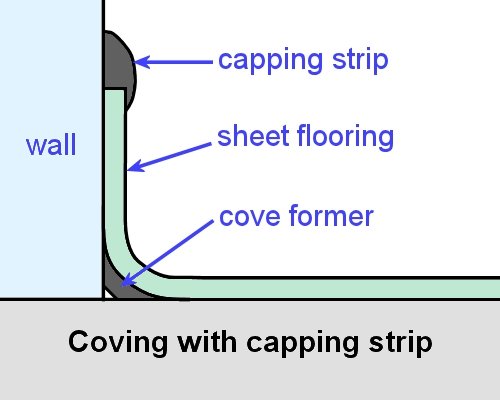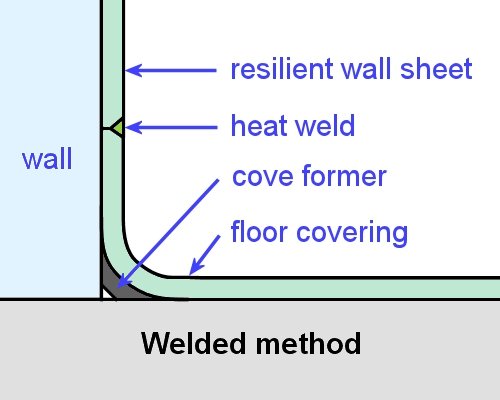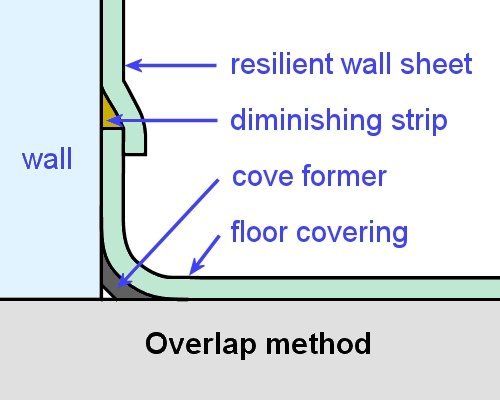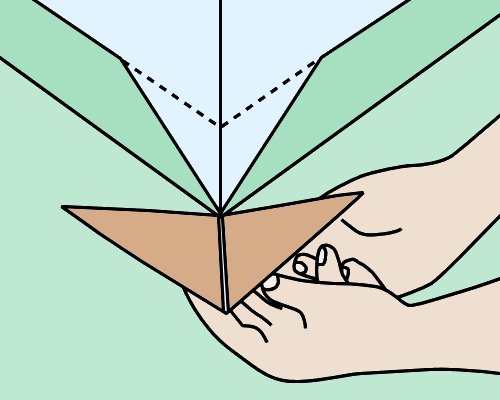Coving field material
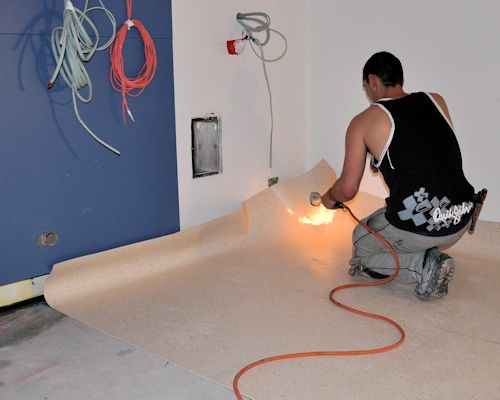 Audio for slide 1 (mp3 |6|KB)
Audio for slide 1 (mp3 |6|KB)
When it's installed in a wet area, such as a shower or bathroom, the coving height must be at least 150 mm.
Depending on the radius of the curve at the base, a heat gun may be used to make the floor covering more flexible, particularly at corners.

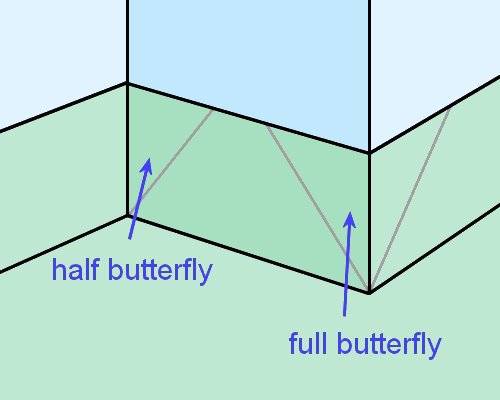 Audio for slide 5 (mp3 |6|KB)
Audio for slide 5 (mp3 |6|KB)
Internal and external 'butterfly' corners
AS 1884 does not permit vertical welds in the corners of coved sheets in wet areas.
This is because the weld could become a weak point if there is any movement in the substrate, which would reduce the corner's water resistance.
Instead, the joints must be cut at 45 degrees to the corner.

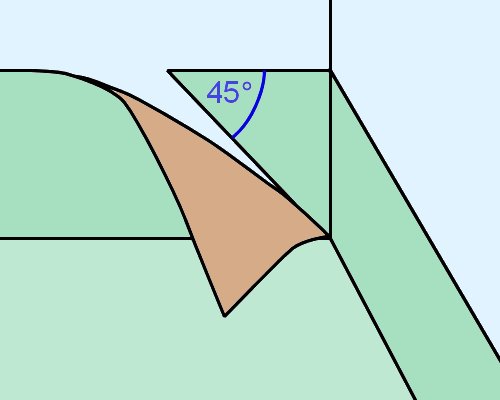 Audio for slide 7 (mp3 |6|KB)
Audio for slide 7 (mp3 |6|KB)
Internal corners are also finished at 45 degrees. In this case, the triangular piece that wraps around the corner is called a half butterfly.
The link below goes to a video clip produced by Altro Flooring that demonstrates how to form butterfly corners.
Note that it is called 'Alternative methods', because there are other clips in the Altro series that show how to cut and weld mitred corners with vertical joins. However, these techniques are not approved in AS 1884 for wet areas.
Altro Flooring - 'Alternative methods'

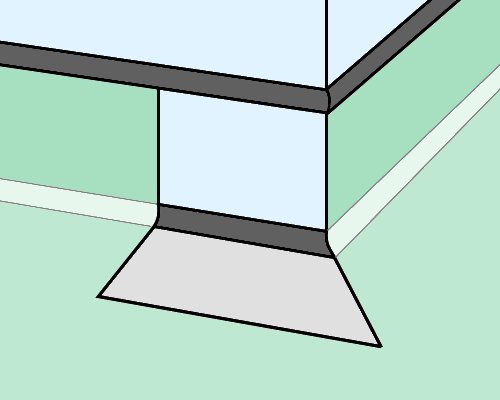 Audio for slide 8 (mp3 |6|KB)
Audio for slide 8 (mp3 |6|KB)
Mitred corners using a 'make-out' piece
In areas where water resistance is not a priority, it's possible to mitre the corners with the aid of a separate make-out piece.
However, the end result is a corner with a vertical join, so you must make sure that it will be acceptable in the project you're working on before you decide to finish the corner in this way.
The video clip linked below shows the process for fitting internal and external mitres with a make-out piece.
'Altro handy hint - Fitting to an internal and external mitre':


Learning activity
Audio 9 (mp3 |6|KB)Here are the individual video links again, together with questions relating to the techniques being demonstrated.
Watch the videos and then answer the questions.
- How does the installer make the flooring material more flexible so it can be pushed tightly into the corner?
- How does he enable the butterfly piece to bend easily around the external corner?
- What technique does he use to avoid scorching the capping seal while he is welding the joint?
- How does he 'blend in' the ends of the welds after they have been trimmed?
- How does the installer mark a line in the coved material in the internal corner before he cuts it?
- Which part of the make-out piece does he cut first?
- Which part of the make-out piece does he cut last?

 Go to Fitting cove skirting
Go to Fitting cove skirting